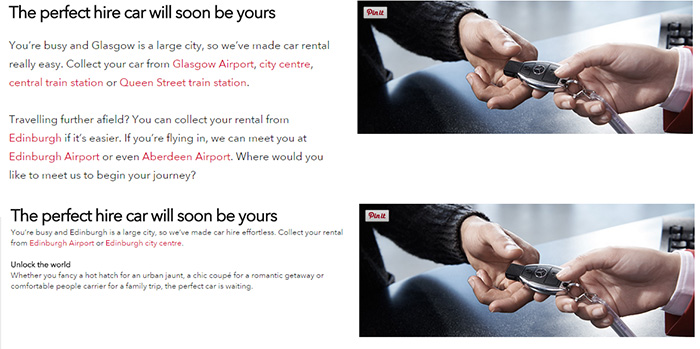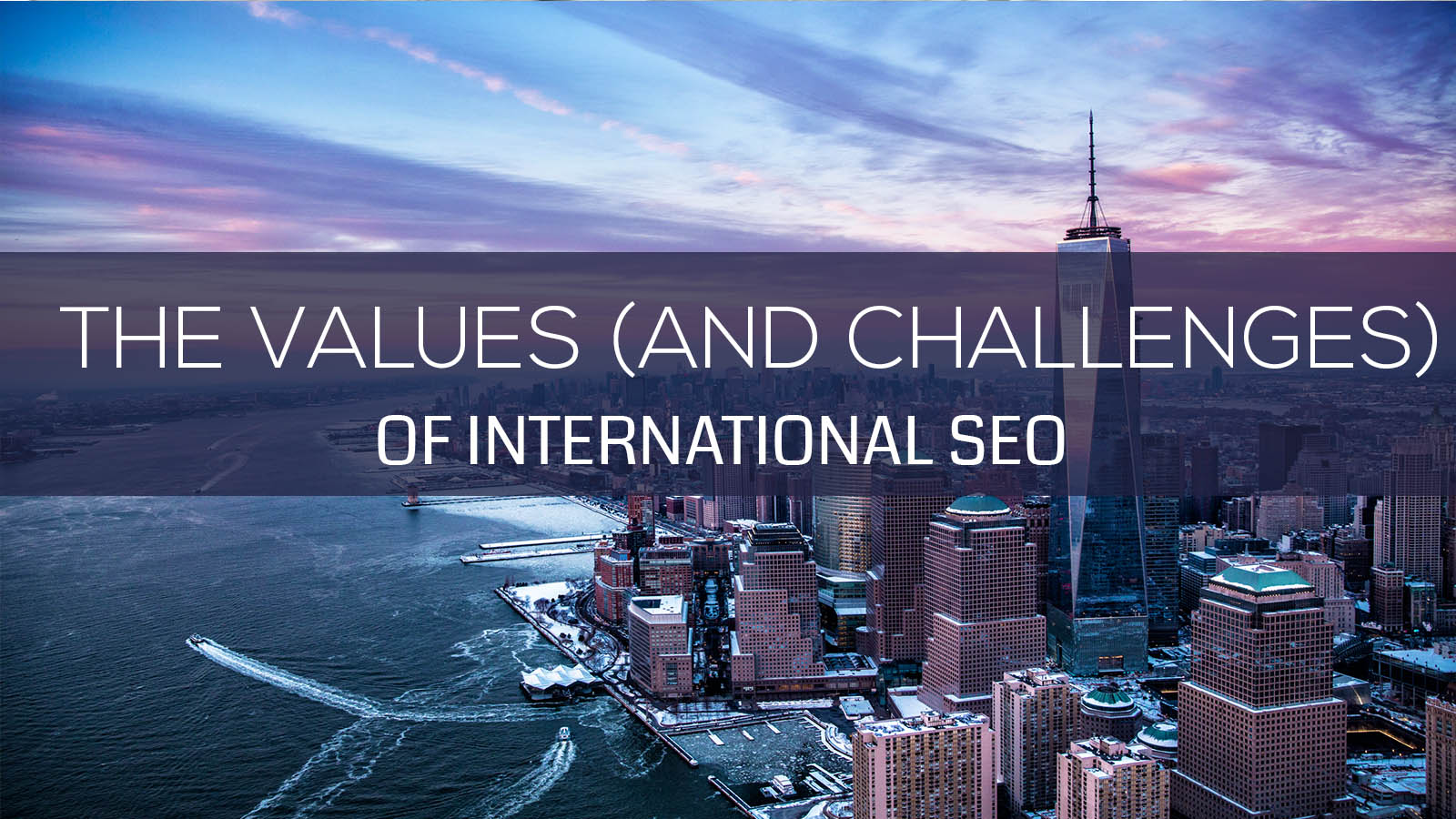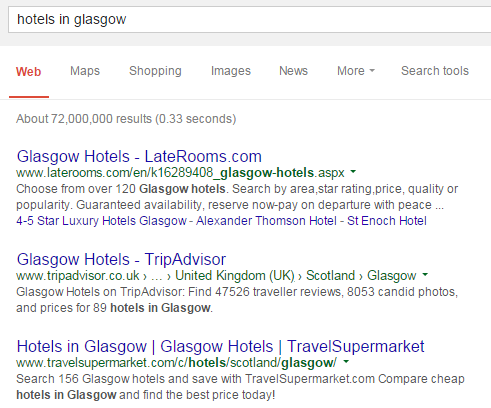Today I was looking at a popular hotel site (I won’t say which one) to see if there was any reason why they wouldn’t be ranking for generic terms in non-domestic markets. The chain has a hotel in a very popular tourist location and has massive appeal worldwide. It was only when I had a look at the Metadata for the site that I noticed all their international landing pages which were in another language didn’t have any meta description. A quick glance over the text made it look as though the content was a quick Google Translate was carried out ,which is fine in itself considering the site is English, but not having the Meta description easily altered (or even present) was causing the site to miss out on a massive chunk of potential visitors.
Boyd Digital has been lucky enough to work with some great international companies. From hotel chains and car rentals to tyre and comic book companies, we’ve had some great experience of helping increase traffic to international sites that are looking for an increase in more than one market. It sounds like a bit of a daunting task when you first think about it, but there are some tips and tricks we’ve picked up along the way that can help an entire brand’s visibility increase. Without giving too much away, here are of the best tips and daunting challenges we’ve come across when carrying out international SEO.
You don’t need Rosetta Stone, but it helps
So your new client has sites in the UK, Ireland, America, Spain, France, Germany and Italy. You speak English, watch El Clasico when it’s on, appreciate a good wine and like bratwurst & pizza. It won’t help one iota if you’re tasked with giving all their sites a meta review. Speaking the language isn’t the real challenge, but knowing the guidelines can help. Don’t let the language of your descriptions and titles overwhelm you. Remind yourself that SERP results are the same length all over the world and thinking in terms of pixel length is just as important as the keywords you use. We even have a free tool anyone can use to get a preview of what their desired title and meta will look like on a Google SERP. Translating a title tag won’t ever be as heard as reciting a paragraph in GCSE French because once you get to terms with the keywords an international site has you’ll become familiar with using those terms in the same structure you would natively.
We once had to create meta descriptions for Midori’s Swedish landing pages. No one in the office speaks Swedish. We all like Ikea but Malm drawers and meatballs is about the height of our Swedish grammar. Avoiding the panic that would be expected, we applied the idea of working out the guidelines and length before double checking the grammar involved for each piece of content. It was a simple step that saved a lot of time, made keyword research easier and helped the client’s traffic to increase. Little adjustments like this can make the task of having to adapt more than 10,000 meta descriptions for a hotel chain like Starwood just that little bit easier and help to increase their traffic by 27%.
Investigate the content
When working with a car hire site, we realised that a lot of car hire sites are incredibly thin on providing users credible content. When someone searches for a hire car, they don’t really care about the T&Cs making up the bulk of a site’s content. They want to know how easy it easy to pick up a car, where to pick it up, where to eat that isn’t an overpriced airport meal and how easy it is to get in to town or a hotel. Creating relevant content for a landing page on an international site takes more than simply chopping and changing “Car Hire in LOCATION”. Every page on an international site needs to have a good level of individual content no matter how far down the hierarchy you go.

Avis: probably the first name to come to mind when thinking about car hire. This is what their landing pages for Edinburgh and Glasgow look like. Thin content, copy and paste text and the same stock image. Someone searching internationally who might be looking to hire a car when travelling around Scotland would look at those pages and think ‘I am learning nothing new here’, especially when the text isn’t formatted to be the same size on both pages. Users want to see as original a form of content of possible. Want a really good example? Just look at the results for ‘hotels in Glasgow’
The top3 results are all booking sites that are crammed full of user ratings and reviews. And the content on these pages will always be updated, new and relevant. It’s the reason why a site like Hotels.com thought the best way of competing was by buying links, something they just got busted for this week. When dealing with content for an international site, put time in to making sure the content you’re creating is something that someone 1 mile or 1000 miles away can understand. That isn’t an excuse to get as generic as that Avis content, but to make sure landing pages have a level of accuracy that can be matched with the like of a page of reviews on TripAdvisor/Yelp etc. We did it for a UK luxury hotel group by creating new pages which focussed on helping their resources rank better for generic terms. The result? An additional £96k per month.
Check all the eggs in the basket
The main site might be technically sound, but if the client has multiple domains there is a very high chance that they all won’t be in as good as condition. Check for instances of easily overlooked factors like XML sitemaps or the Robots.txt not being present. You’d be surprised how many big companies are missing features like this on their international domains or don’t remember to wrap important elements like contact details in schema; an element which doesn’t require a person to know the native language.
Solve one problem; solve a hundred
When you come across a problem on one site, do a quick check and see if it’s on all the different domains too. A lot of the times we’ve been able to improve traffic on international domains for clients because we spotted an element was wrong on one site and carried across to others. We once noticed that Michelin Tyres hadn’t correctly mapped a URL from an old to a new page. The problem existed across multiple sites. The fix seen numbers that were dropping dramatically return to where they had been within 6 weeks with traffic then continually rising for another 8 months.
Taking on an international client is a big deal and the changes you deliver need to have a good level of work behind them (don’t even think about trying to outsource translation work for cheap). Remind yourself that any opportunity to improve rank in other markets is only a good thing, and something as simple as making sure a Meta description is in place could open up potential you mightn’t even have thought of.




